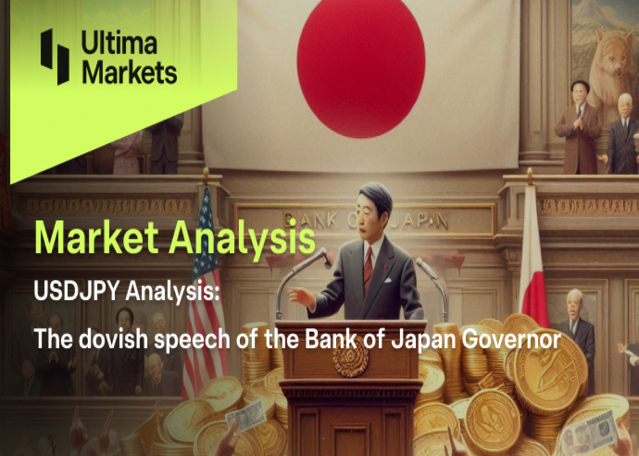Dollar Déjà Vu All Over Again
USD: Revisiting the Depth of Market Movements. The response to last week's blend of softer US inflation figures and indications of a slowdown in consumer spending resembles the market's reaction following the initial decline in inflation during the summer. The initial weaker inflation report provided a sense of relief to the market after a series of unexpected positive surprises, and this latest one should similarly allay concerns that seasonal distortions might present unfavourable optics leading up to the December FOMC. The considerable reaction in the FX market is logical because it helps limit the potential upside risks in yields and introduces the prospect of earlier, non-recessionary rate cuts in the US. This possibility stands as a significant downside risk to our previously held "stronger for longer" Dollar perspective. Demonstrating that the US economy does not necessitate such a level of restraint would be a welcome relief for the rest of the world, where coping with the repercussions of higher yields has been more challenging. Furthermore, shifts in Financial Conditions Index (FCI) prompted by data should provide some resilience to the rhetoric-driven easing observed after the last FOMC meeting. However, particularly in the realm of FX, I maintain the view that it will be challenging to diminish the appeal of the Dollar significantly at this juncture. Firstly, although the data is encouraging, it is not apparent that the outlook has shifted dramatically towards earlier rate cuts. Inflation remains at or above the target on a sequential basis, and my GDP tracking has increased, not decreased, following last week's data. Secondly, I still contend that the relative return prospects in the currencies challenging the Dollar are not particularly enticing. It remains difficult for me to adopt a more optimistic stance, even after the substantial market reaction last week, especially considering that front-end G10 yields are largely moving in unison in an environment where cyclical trajectories still exhibit significant divergence. My 2024 Outlook envisions steady US growth, elevated US real rates, and a gradual recovery in Europe and China, both supported by some policy measures. This baseline scenario aligns most closely with relatively subdued FX volatility and a gradual, uneven decline in the US Dollar.
JPY: Yield-Driven Dynamics. USD/JPY experienced a significant decline of a few substantial figures in the last two trading sessions, settling just below the 150 marks. However, equities and the 10-year rate differential displayed minimal changes during this period, indicating that the predominant factor might have been the unwinding of long USD/JPY positions. Broadly speaking, I anticipate the Yen's movements to be primarily influenced by macroeconomic factors, particularly since my stance on the Bank of Japan's exit strategy remains more dovish than the market's. My baseline forecasts, which include sustained elevated US real rates, resilient US growth, and a continued ascent in US equities throughout the upcoming year, suggest persistent downward pressure on the Yen.
If, however, the market experiences phases of lower real rates amid the resurgence of the "return of the Fed put" narrative, this could alleviate some of the upward pressure on USD/JPY. Nevertheless, I see limited room for Yen appreciation, as any decline in US yields is likely to be short-lived unless the FOMC signals the possibility of earlier, non-recessionary rate cuts or provides evidence of an imminent US recession. In summary, I anticipate a turbulent trajectory for USD/JPY, marked by occasional upward movements, given the ongoing risks of intervention and a potential earlier exit from negative interest rate policy (NIRP). Additionally, the likelihood of periodic shifts to a market regime characterized by higher equities and lower yields, which tends to support the Yen, contributes to the overall outlook.
Despite these considerations, I perceive the risks as tilted towards a more sustained "stronger for longer" Dollar trend in 2024, likely coinciding with a prolonged period of Yen weakness.
EUR/AUD: Short-Term Strategy for a Short-Term Rally. The recent interplay of softer US inflation figures alongside improved activity data has set the stage for a relatively favourable market environment. While my outlook continues to favour sustained US outperformance and anticipates limited relief in rates over the next 3-6 months, the narrative of a positive supply shock has gained momentum. This market response provides an opportunity for tactical gains in pro-cyclical G10 FX currencies such as AUD, NZD, and the Scandis. These currency pairs are poised to perform well in an environment where markets factor in a "dovish policy shock," and the price action following the CPI report has validated the relative outperformance of these currencies.
However, I believe that the most suitable currency pair to capture this environment is likely to be a short position in EUR/AUD. While the Dollar typically experiences the most significant decline in this scenario, I prefer EUR funding over USD funding, especially given the Euro's robust performance this week. The upcoming Euro area PMIs serve as a reminder that while non-recessionary rate cuts might be on the horizon in the US next year, the Euro area may be compelled to cut rates due to persistent concerns about weak growth. Consequently, I opt to avoid long positions in the Scandis, despite favourable levels, as the domestic situation in Sweden appears somewhat negative, and the currency may face pressure from lacklustre European growth data as well.
CAD: Embracing Patience. The market anticipates a subdued CPI report on this week. Should the data align with these expectations, it is likely to reinforce the Bank of Canada's (BoC) decision to maintain its current policy stance for another meeting. While policymakers aim to preserve flexibility and leave room for the possibility of another rate hike, their initial hawkish stance has evolved toward a more patient approach. The Governing Council (GC) has recently shown a greater willingness to tolerate higher inflation to mitigate any adverse impact on economic activity, allowing below-potential growth to gradually bring inflation back down.
In the latest Summary of Deliberations, the GC displayed a divergence of opinions regarding the need for higher rates. Some members believe that the BoC has completed its rate-hiking cycle and should adopt a patient stance, while others contend that a further increase in the policy rate may be necessary to achieve the inflation target. Notably, concerns persist within the council about the inconsistency of wage growth with the inflation goal. Although Goldman Sachs economists posit that the BoC is likely finished with rate hikes, they acknowledge that the risks lean towards an upward trajectory, given the current levels of inflation and wage growth.
Despite incrementally negative domestic developments, the impact on the Canadian Dollar (CAD) has been less pronounced compared to the broader risk environment. CAD has faced challenges from declining oil prices and a diminishing perception of "US exceptionalism" in the markets, both of which have weighed on CAD crosses. However, my forecast, predicting sustained US outperformance and limited rate relief, aligns with the expectation of relative strength in the CAD over time.
This content may have been written by a third party. ACY makes no representation or warranty and assumes no liability as to the accuracy or completeness of the information provided, nor any loss arising from any investment based on a recommendation, forecast or other information supplied by any third-party. This content is information only, and does not constitute financial, investment or other advice on which you can rely.



















